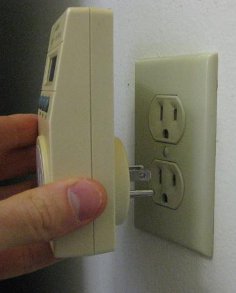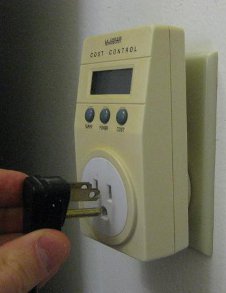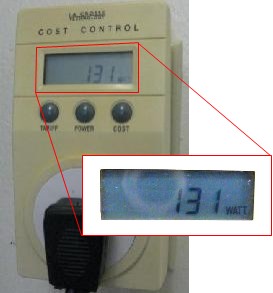A watt meter allows you to easily measure how much power your appliances are using. Use it with anything that plugs into a wall socket.
|
|
|
A watt is a measure of power. A 15 watt (15W) compact flourescent light bulb uses 15 watts of power, for example, whereas a hair drier on the hot setting uses 1200 watts. Instead of saying 1200 watts, we can say 1.2 kilowatts (1.2kW).
1000 watts = 1 kilowatt
Look at your electricity bill and you'll see the number of kilowatt hours of electricity you used during the last billing period (225kWh in the sample bill below.) A kilowatt hour (kWh) is simply a measure of the power, watts, you used over a period of time, hours.
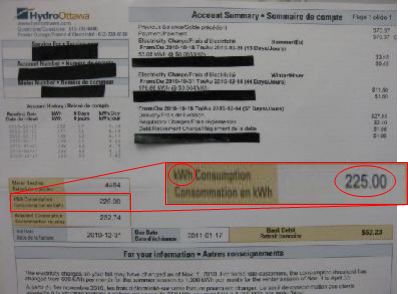
|
There are a variety of different watt meters available on the market.
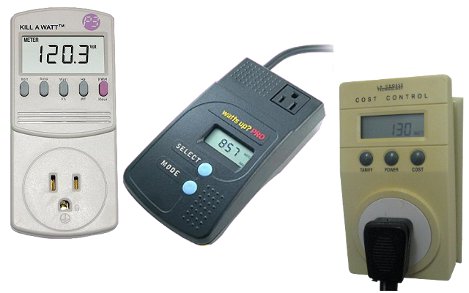 |
Watt meters range in price from $25 to $50, depending on the features it has. Some libraries have watt meters for people to borrow. Mostly all you need is one that tells you the amount of watts an appliance is using now (see above photos) and an accumulated total amount of watts you've used since you plugged it in (see the following photo on the right below.)
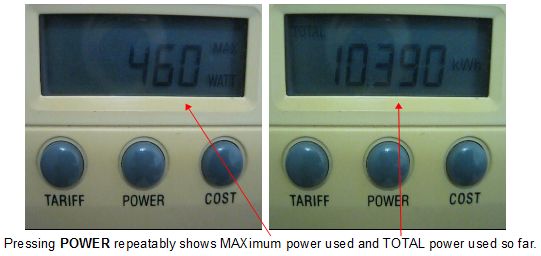
|
An additional feature is the ability to program in the amount you pay per kilowatt hour, your TARIFF, in my case around $0.13 per kilowatt hour.
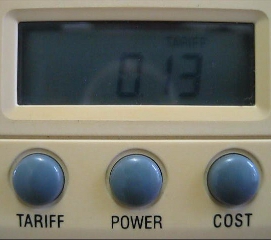
|
Once you've programmed that in and you've taken some power measurements, the watt meter will calculate out various costs based on those measurements.

|
How to measure power for a fridge
Finding out your power usage for a fridge is a little tricky. A fridge turns on and off by itself at any time and can run for any length of time. You don't really know how long it runs during one hour or one day. There are two approaches to handling this.
The first approach (calculations shown below) is to leave your fridge plugged into the watt meter for a longer period of time, 179 hours for example (though 24 hours should be sufficient.) Then take the TOTAL power the watt meter says was used during that time and divide it by 179. That gives the power used per hour on average. Multiply that by the number of hours in your billing period to find out how much of your bill's power is taken up by the fridge. Then multiply that by the amount you pay for electricity per kilowatt hour to find out the cost.
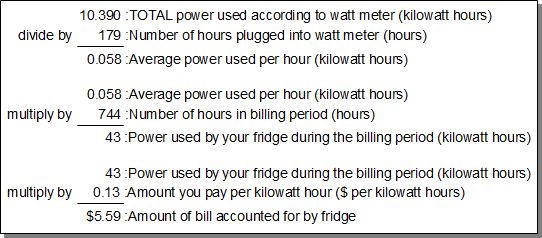
|
The second approach is to again leave your fridge plugged into the watt meter for a longer period of time, 24 hours for example. Then program in the amount you pay per kilowatt hour (your TARIFF) and the watt meter will calculate your costs for you as illustrated above.
If your indoor temperature is warmer in the summer and colder in the winter then your fridge will use more power in the summer than in the winter since it has to work harder to keep cool.

